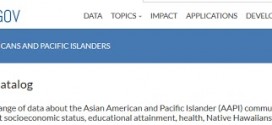By Jenny Chen
Asian Americans are often cast as the “good student.” In the 2002 documentary Spellbound about the Howard Scripps spelling bee, one of the teachers is shown as saying “I love have Indian students, every time I see an Indian student I get excited.”

At first glance, this perception of Asian students seems warranted: 83% of Asian Americans graduate from high school. But upon closer inspection, we see that such a statistic puts a blanket statement over the Asian American population and fails to account for the sub-populations within the AAPI community. For example, only 35-40 percent of Cambodian and Laotian students graduate high school, and only one-third of these will go on to attend college. Similar trends can be found among Pacific Islanders with 49.3 percent of Native Hawaiian, 53 percent of Guamanian, and 57.9 percent of Tongan adults not attending college. Stereotypes of Asian Americans doing well in school hurt those students who are in need of help.

Sarah Ha saw first hand the challenges that Asian Americans from low-income backgrounds and with limited English proficiency can face. Ha was born in Worcester, MA and moved to Korea at the age of six. When she returned to the United States, she found that her teachers were not very willing to help her with her English language skills and held her to lower standards.
However, a third teacher actively sought out a Korean language translator from the local college to help Ha take control of her own education and eventually attend Boston College. That experience has stayed with Ha, and she recently helped launch the Asian American and Pacific Islander Initiative at Teach For America in order to reach other struggling Asian American students.
Ha comes to Teach For America from the Asian and Pacific Islander American Scholarship Fund (APIASF) and she is using her expertise in education and Asian American issues to shape the initiative at Teach For America. Ha says that the first step to addressing the needs of Asian American students to look more closely at the sub-populations within the Asian American community.

“The AAPI community boasts a wide range of demographic characteristics unlike any other racial group in America: it consists of more than 48 ethnicities, over 300 spoken languages, varied socioeconomic status, and distinctions across immigration history, generational status, culture, and religion. Combining all ethnic groups into a lump group obscures their varied realities and histories – with subgroups this diverse, how does it possibly make sense to look at the community in aggregate?” Ha wrote in her blog post on Teach For America, announcing the Asian American and Pacific Islander Initiative.

Ha says that the best thing a teacher can do to be culturally aware is to “put the ball in the students’ court.” This involves listening to students, figuring out their needs, and figuring out how their needs might best be met. In addition, Ha says that TFA is forging partnerships with organizations like APIASF to build on their expertise.
 Asian Fortune Your source for all things Asian American
Asian Fortune Your source for all things Asian American



